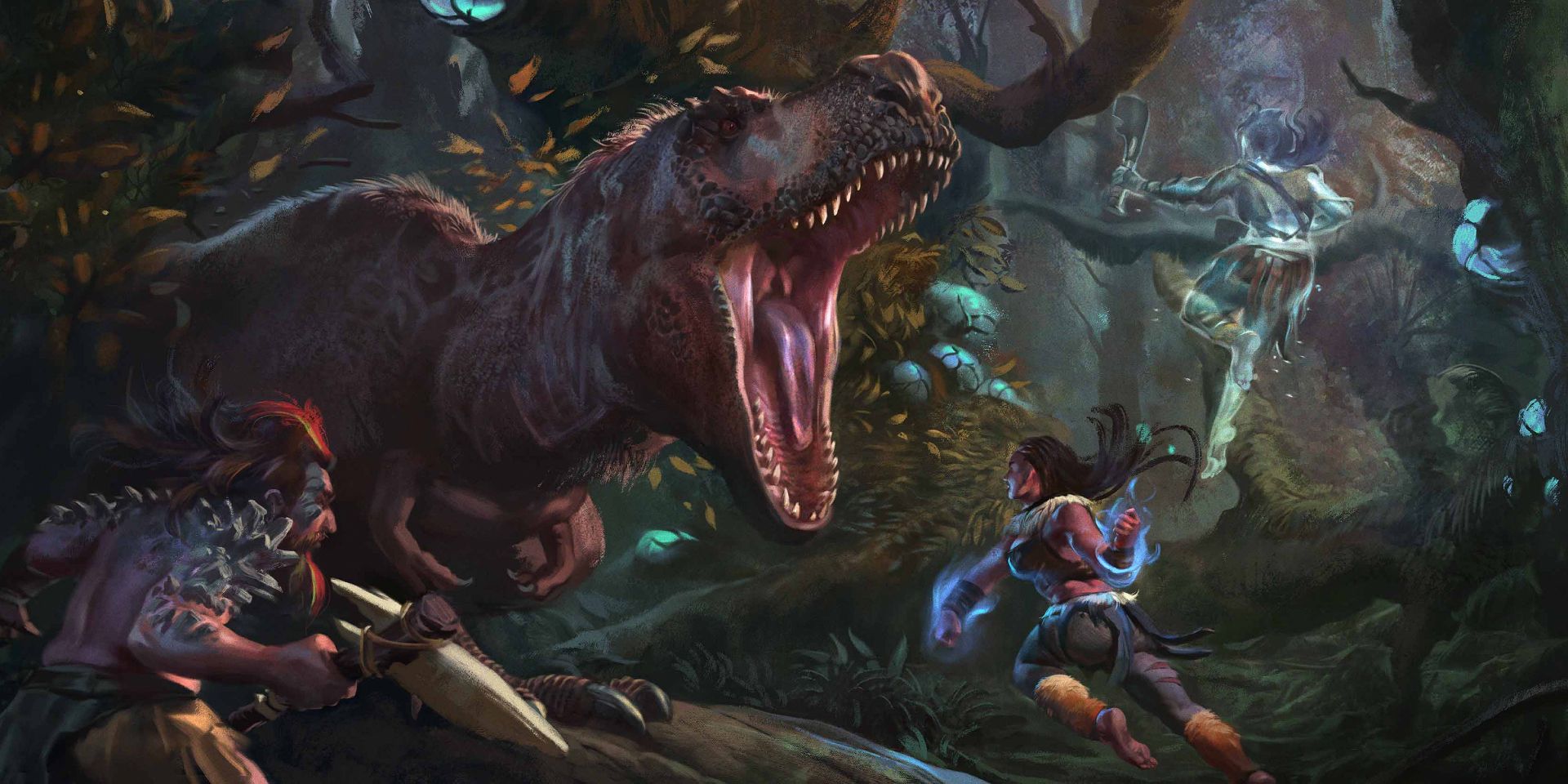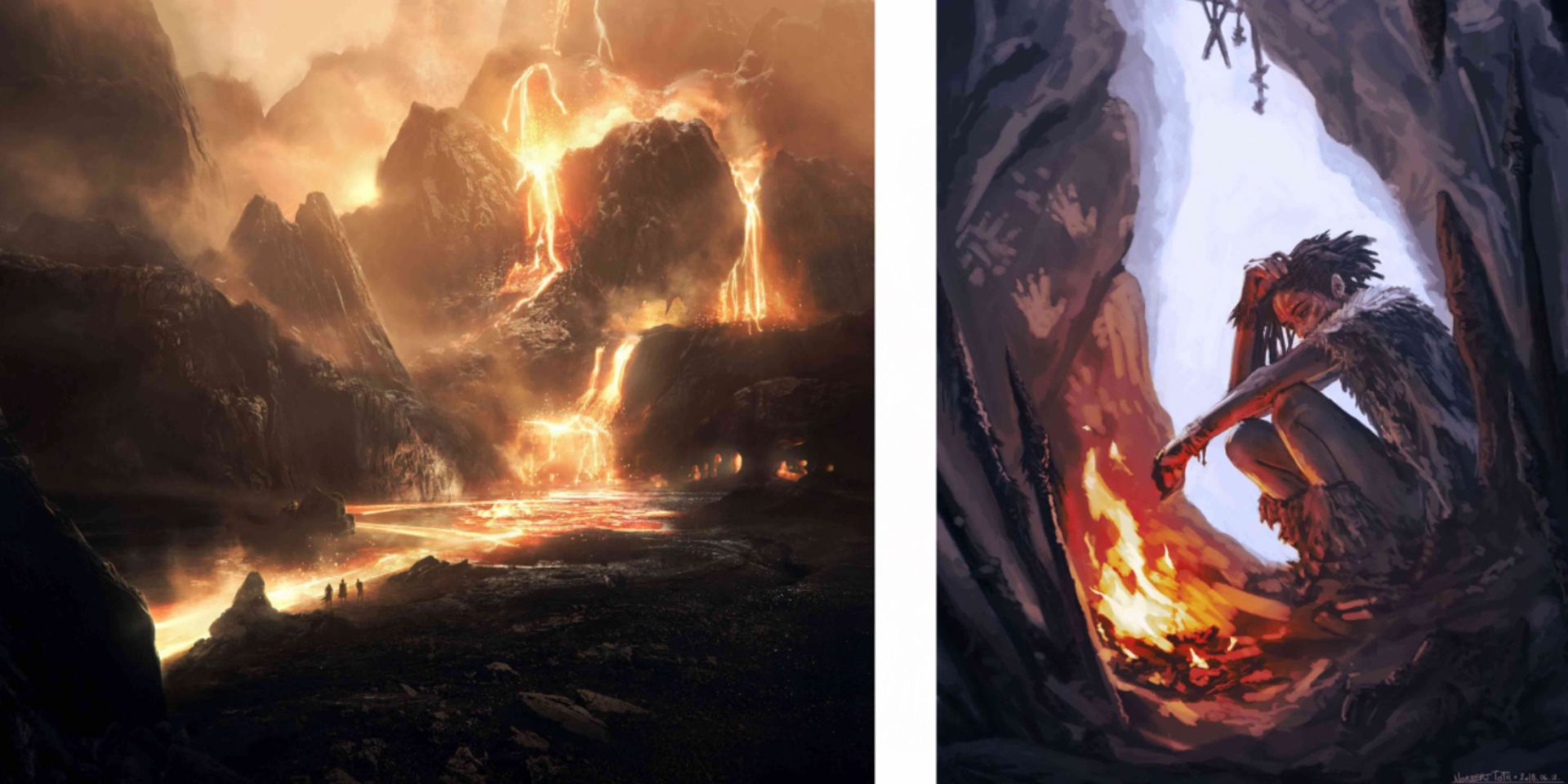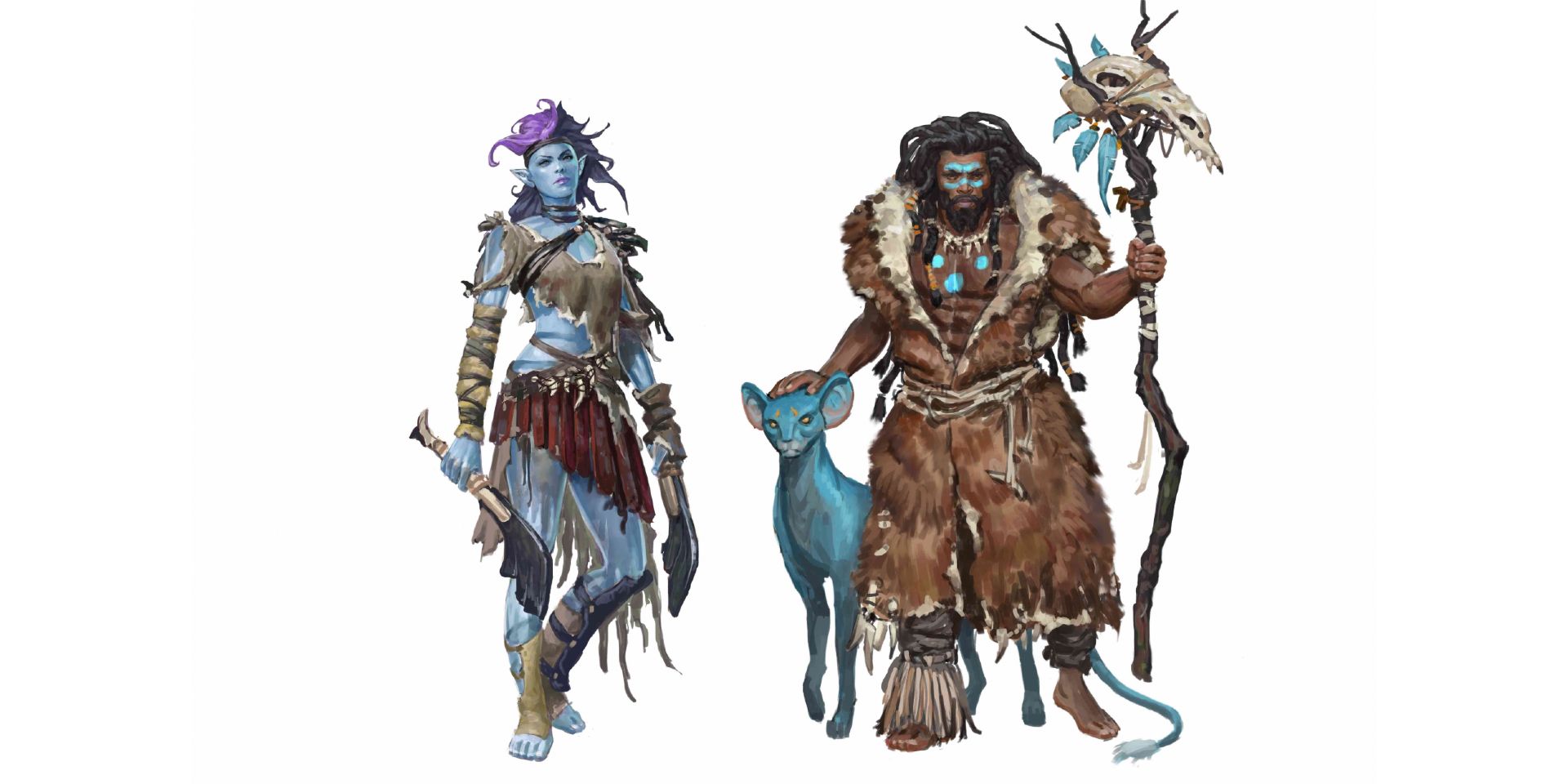"Primordial Fantasy" is the name of the game for Planegea, a Dungeons & Dragons 5e setting designed by Atlas Games. While still adhering to the 5th edition rules, Planegea re-flavors the D&D experience by putting players in a world with primordial gods, roaming hunter-gathers, tools of stone, and prehistoric creatures such as dinosaurs co-existing with dragons and giants. The resulting setting can be anachronistic at times, throwing together prehistoric species separated by millions of years and working off a pop culture understanding of the "Stone Age"; unlike Jurassic Park or 10,000 B.C., Planegea does have the excuse of being a magical fantasy world.
In some ways, the Planegea setting is a mirror to D&D's Dark Sun, a post-apocalyptic sword-and-sorcery fantasy setting first created for Dungeons & Dragons 2nd edition. While Athas, the world of Dark Sun, is a literally god-forsaken wasteland blighted by the reckless use of life-draining arcane magic, Planegea is a young world teaming with megafauna, migrant clans and young, half-formed deities. Furthermore, Wizards in Dark Sun are hated and persecuted for practicing the art that ruined the environment, while in Planegea, this same scorn is reserved for Druids and Rangers, whose powers siphon the divine energy small gods need to survive.
In October of this year, Atlas Games will launch a Kickstarter campaign to raise funds for a full-length Planegea sourcebook. In the meantime, tabletop gamers can access the free Planegea Quickstart on the Atlas Games website, a compact document that reveals several interesting details about this D&D 5e setting.
The Setting Of Planegea Enforces A "Stone Age Stasis" On Player Characters
Atlas Games, to a degree, presents their world of Planegea as the distant pre-history of a medieval fantasy setting like the D&D classic Forgotten Realms. Classic fantasy clerics, for instance, are re-flavored as Shamans who frequently need to forge ties with the local gods of every new land their clan passes through, while Wizards are re-flavored as "Spell-Skins" - mages who construct spells by making cave paintings, then tattooing copies of those images onto their flesh. Certain D&D races in Planegea have also been re-flavored as being in a "primal" or "half-formed" state: Elves are ethereal, luminous exiles from the world of dreams, while dwarves are beings partially composed of stone.
At the same time, Atlas Games has introduced special RPG world-building details to keep their Planegea setting locked at a "Stone Age" level of technology. Metal ore doesn't exist in this setting, for starters, making it impossible to players to create a technological revolution using out-of-character knowledge. Writing, numbers, wheels, crops, and money are also forbidden in the world of Planegea, with those who try to innovate such practices dying gruesomely at the hands of the enigmatic "Hounds of the Blind Heavens."
Did Atlas Games need to impose these in-universe restrictions to maintain the "Stonepunk Fantasy" genre of their Planegea setting? Probably not; in real-life, the Paleolithic era lasted for millions of years before Homo Sapiens discovered agriculture, wheels, metal-working, writing, and other staples of sedentary civilization. Ultimately, though, the "Stone Age Stasis" restrictions of Planegea can easily be ignored if a Dungeon Master wishes; furthermore, Atlas Games seems to have introduced these "Stone Age Stasis" rules purely so players could break them – either through clever technological loopholes or epic quests to magically change the nature of reality.
The Prehistoric Megafauna Of Planegea Technically Shouldn't Co-Exist
Both the Quickstart and the Atlas Games website describe Planegea as a world filled with both magical creatures and real-life animals from different eras of earth's pre-history, citing Mammoths, Pterodactyls, and the T-Rex as wild beasts players can encounter. This "grab-bag" approach to pre-historic megafauna does willfully ignore how Mammoths and Dinosaurs lived in completely different eras, or that Pterodactylus went extinct long before Tyrannosaurus Rex evolved. Planegea seems to be full of paleontological anachronisms like these.
And that's fine! Planegea, like other Dungeons & Dragons settings with dinosaurs or extinct mammals, is ultimately meant to be a work of fantasy teeming with astonishing impossibilities and marvelous improbabilities. Compared to the blatant displays of magic, powerful dragons, and death-defying feats of adventurers in Planegea, a few prehistoric species from different eras co-mingling comes across as plausible by comparison.
Source: Atlas Games



